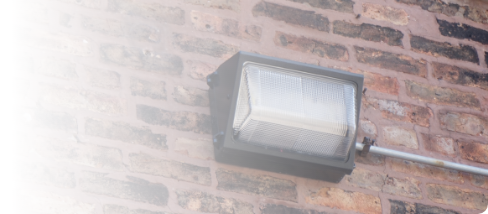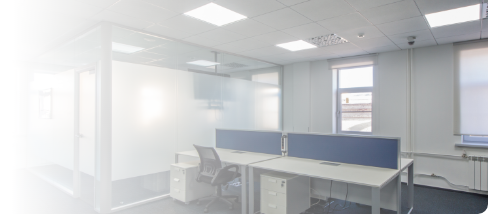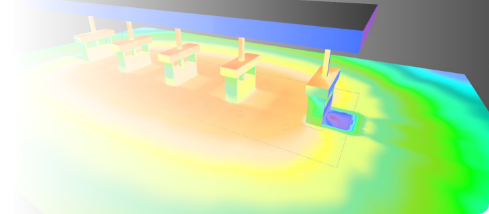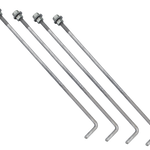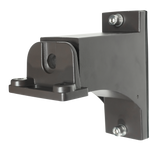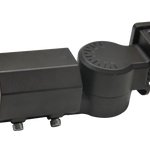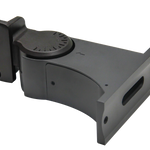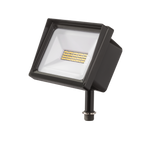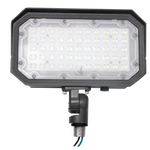You have no items in your shopping cart.
In the dynamic landscape of commercial lighting, LED technology has emerged as a beacon of efficiency, longevity, and innovation. Gone are the days when the mere mention of LED lighting evoked images of sterile, bluish glows, and exorbitant price tags. Today, LEDs have proven their mettle, offering a diverse range of solutions tailored for various commercial and industrial applications.
However, the swift rise of LEDs has not only been propelled by their technological advantages but also by a growing emphasis on sustainability and energy conservation. With businesses becoming more environmentally conscious and keen on reducing overheads, the shift towards LED lighting seems like a natural progression. But, as with any product that experiences a surge in demand, the market quickly becomes saturated with a plethora of options. For businesses, this poses a challenge: How do you discern the nuanced differences in quality, performance, and price among various LED products? And to add another layer to this conundrum, how does one navigate the maze of compliance to tap into lucrative LED rebate programs?
In this guide, we'll shed light (pun intended) on the pivotal factors that differentiate LED products, offering insights into making informed decisions. Moreover, we'll demystify the world of LED rebate programs, ensuring that businesses not only benefit from the operational advantages of LEDs but also from the financial incentives that accompany them. Whether you're an electrical contractor, a facility manager, or a business owner considering an LED overhaul, this guide promises clarity, direction, and a luminous path forward.
Chapter 2: Factors that Influence LED Quality
LEDs (Light Emitting Diodes) are a testament to how far lighting technology has come. But as with any technology, not all LEDs are created equal. The quality of an LED product can vary significantly based on several factors. Recognizing and understanding these factors is pivotal when evaluating which LED solution is best suited for a particular application.
2.1 Lumens per Watt: Understanding Brightness Efficiency
At the core of any light source is its efficiency: how much light it produces for every watt of electricity it consumes. This ratio is measured in lumens per watt (lm/W). A higher lm/W indicates a more efficient light source. For LEDs, this efficiency not only translates to energy savings but also denotes a well-designed product that maximizes light output while minimizing energy consumption.
2.2 Color Rendering Index (CRI): True Colors Shine Through
CRI gauges how accurately a light source depicts the true colors of objects compared to natural light. On a scale of 0 to 100, a higher CRI indicates that the light source renders colors more faithfully. For commercial spaces where the accuracy of color representation is crucial—like retail stores, art galleries, or design studios—a high CRI LED is indispensable.
2.3 Lifespan: The Long-Term Benefits of Quality LEDs
One of the primary advantages of LEDs over traditional lighting solutions is their longevity. While a typical incandescent bulb may last around 1,000 hours, quality LEDs can shine bright for 50,000 hours or more. However, this lifespan can be influenced by factors like heat management, component quality, and usage patterns. A well-constructed LED product ensures longevity, translating to reduced replacement costs and maintenance disruptions.
2.4 Heat Management: Keeping Things Cool
LEDs are more efficient than traditional bulbs, and they produce less heat. However, they are also more sensitive to heat. Effective heat dissipation mechanisms, such as quality heat sinks, ensure that the LED remains cool, thereby preserving its efficiency, brightness, and lifespan.
2.5 Durability and Resistance to External Factors
LEDs are solid-state lights, meaning they're more rugged than fragile bulbs with filaments. But durability also extends to how an LED performs under varying environmental conditions. Whether it's resistance to cold temperatures in an outdoor setting or resilience in high-vibration industrial environments, a quality LED is designed to withstand external challenges without compromising performance.
Chapter 3: The Price-Performance Balance
The allure of LEDs extends beyond their shimmering brilliance. For businesses and commercial establishments, the decision to adopt LED lighting is often influenced by the long-term economic benefits they promise. However, in a market saturated with a myriad of choices, understanding the true value of an LED product requires a more nuanced examination than merely its upfront cost.
3.1 Initial Investment vs. Long-Term Savings
It's tempting to gravitate towards the most affordable LED options available. But a lower upfront cost can sometimes mask hidden expenses or shortcomings. For instance, a cheap LED might have a shorter lifespan, leading to frequent replacements. Or it might consume more power than its pricier counterparts, leading to higher electricity bills. When calculating the total cost of ownership, factors such as energy savings, replacement costs, and potential maintenance need to be accounted for.
3.2 ROI Considerations: More Than Just Energy Savings
The return on investment (ROI) from LEDs isn't solely based on energy savings. The longevity of LEDs means fewer disruptions from maintenance or replacements—a crucial aspect for spaces like 24/7 operational warehouses or critical healthcare facilities. Additionally, the improved light quality can enhance the aesthetic appeal of commercial spaces, potentially drawing more customers or increasing workplace productivity.
3.3 The Hidden Costs of Low-Quality LEDs
Opting for low-quality LEDs can introduce several unforeseen costs:
Frequent Replacements: Short-lived LEDs can lead to increased replacement costs, not just in terms of the fixture but also in terms of labor and operational disruptions.
Inconsistent Light Quality: Flickering lights or inconsistent color temperatures can compromise the ambiance of a space. For businesses, this can impact brand perception, employee morale, or even customer experience.
Energy Inefficiencies: While all LEDs are energy-efficient compared to traditional lighting, there's a significant variance within LED products themselves. Lower quality LEDs might draw more power for the same luminance as a higher-quality alternative.
3.4 Understanding Total Cost of Ownership (TCO)
When evaluating the price-performance balance, it's essential to consider the Total Cost of Ownership (TCO). TCO accounts for the initial product cost, energy consumption costs, maintenance expenses, and potential replacement costs over the product's lifespan. A comprehensive understanding of TCO can sometimes reveal that a pricier, high-quality LED might be more economical in the long run than a seemingly affordable, lower-quality alternative.
Chapter 4: How to Evaluate Different LED Products
The world of LED lighting, with its dazzling array of options, can sometimes seem daunting. But, with the right knowledge and a systematic approach, choosing the right LED product can be a straightforward process. In this chapter, we'll delve into the key considerations and provide a guide to navigating the myriad of LED choices.
4.1 Understanding Product Specifications
Every LED product comes with a set of specifications. Interpreting these can provide valuable insights into the product's quality and suitability:
Luminous Flux (Lumens): Indicates the total amount of light emitted by the LED. Depending on the application, you'll need to choose an LED that provides adequate brightness.
Color Temperature (Kelvin): Ranges from warm (yellowish hues) to cool (bluish hues). The right color temperature can influence the ambiance and functionality of a space.
Efficacy (lm/W): Highlights the energy efficiency of the LED. Higher efficacy means more light for less power.
Rated Lifespan: The estimated operational hours of the LED before it dims to a certain percentage of its original brightness.
4.2 Manufacturer Reputation and Warranties
In an industry rife with competition, the reputation of the manufacturer can be a strong indicator of product reliability. Established manufacturers often have stringent quality control processes and offer warranties that safeguard against premature product failures.
4.3 Real-world Reviews and Case Studies
While specifications and manufacturer reputation are important, there's no substitute for real-world feedback. User reviews, testimonials, and case studies can provide invaluable insights into the LED product's performance in actual operational environments.
4.4 Compatibility with Existing Systems
Especially in retrofit scenarios, it's crucial to ensure that the chosen LED product is compatible with existing lighting systems. This includes checking the fitting type, voltage requirements, and any control systems in place.
4.5 Certifications and Standards
Look for LEDs that have been tested and certified by recognized institutions. Certifications ensure that the product meets specific safety, performance, and energy-efficiency standards.
4.6 Environmental and Operational Considerations
Depending on where and how the LED will be used, there might be additional considerations. For instance, LEDs used outdoors should be weather-resistant. In industrial settings, resistance to vibrations or corrosive environments might be essential.
Chapter 5: Compliance for LED Rebate Programs
LED rebate programs are a significant driving force for businesses and commercial entities considering the transition to LED lighting. These programs, often initiated by governments or utility companies, offer financial incentives to adopt energy-efficient lighting solutions. However, to successfully capitalize on these rebates, understanding and adhering to their compliance requirements is crucial.
5.1 An Overview of Rebate Programs and Their Purpose
Rebate programs are designed to encourage the shift towards energy-efficient technologies. By offering financial incentives, they reduce the initial investment cost for businesses, making the adoption of technologies like LEDs more appealing. The ultimate goal is to reduce energy consumption, decrease carbon footprints, and foster a more sustainable future.
5.2 Typical Requirements for Eligibility
While requirements can vary based on the specific program and region, some common criteria include:
Product Certifications: Only LEDs with specific certifications (e.g., ENERGY STAR or DesignLights Consortium) might be eligible.
Proof of Purchase: Original invoices or receipts detailing the purchased LED products.
Installation Verification: Some programs might require on-site verification or photographic proof of installation.
5.3 How to Ensure Your LED Installation Qualifies
To maximize the chances of qualifying for rebates:
Research: Before purchasing, ensure the LED products meet the rebate program's specifications.
Documentation: Maintain all purchase and installation records.
Professional Installation: Some programs may require installations to be done by certified professionals.
5.4 Potential Pitfalls and Common Mistakes to Avoid
Overlooking Details: Always read the fine print. Some programs may have specific clauses that could disqualify you if overlooked.
Delay in Application: Rebate programs may have deadlines or could run out of funds. Apply as soon as possible after installation.
Selecting Non-Compliant Products: Always cross-check product specifications with program requirements.
5.5 Navigating Documentation and Application Processes
Application Forms: Ensure all forms are filled out accurately and comprehensively.
Supporting Documents: Attach all required documentation, from purchase receipts to product certifications.
Follow-up: Keep track of your application status and be prepared to provide additional information if requested.
5.6 Keeping Up-to-Date with Changing Regulations and Opportunities
Rebate programs can evolve over time. Stay informed about:
Program Renewals: Some programs might be renewed annually with new conditions or requirements.
New Programs: New incentives could be introduced as governments and utilities intensify their push towards sustainability.
Conclusion: Illuminating the Future with LEDs
As we've journeyed through the intricate world of commercial and industrial LED lighting, a consistent theme emerges: LEDs are not just about brightening spaces—they're about shaping a more sustainable, efficient, and vibrant future.
Choosing the right LED solution is a multi-faceted decision that requires a deep understanding of product quality, an appreciation of the balance between price and performance, meticulous evaluation, and adherence to rebate compliance requirements. But this complexity shouldn't be daunting. Instead, it offers an opportunity—a chance to make informed choices that not only elevate the aesthetic and functional appeal of commercial and industrial spaces but also contribute to global sustainability efforts.
As manufacturers, our role extends beyond crafting quality LED products. We are custodians of a brighter future, both literally and metaphorically. By sharing insights, offering guidance, and continuously innovating, we pave the way for a world that shines brighter, lasts longer, and treads lighter on our planet.
To our esteemed electrical contractors, commercial contractors, and business owners, we hope this guide empowers you. As you stand on the cusp of lighting decisions, remember that every LED chosen and every installation completed is a step forward in a collective journey—a journey toward a luminous, sustainable tomorrow.
Ready to Illuminate Your Space with the Best LED Solutions?
We've equipped you with knowledge, insights, and guidance on LED lighting for commercial and industrial applications. Now, it's time to bring that knowledge to life!
Why Choose Jarvis Lighting?
Quality Products: Our LEDs are not just products; they're a promise of excellence, durability, and top-notch performance.
Expert Consultation: Confused about which LED solution suits your needs? Our team of lighting experts is here to guide you every step of the way.
Seamless Installation: From selection to installation, we ensure a hassle-free process that prioritizes your business’s operational continuity.
Take the Next Step!
Connect with Us: Reach out to our team for a personalized consultation and discover the best LED solutions tailored for your needs.
Explore Our Range: Visit our product pages to dive deep into the specifications, benefits, and applications of our premium LED range.

